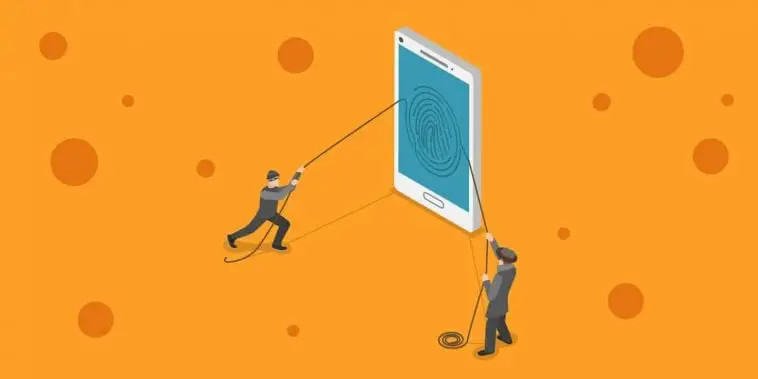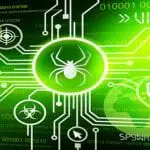It’s going to worry about realizing that your Laptop, iPhone, or computer may be exposed to the virus or ransomware (phishing attacks), but taking away a virus is more comfortable and more efficient than you might assume, with extremely cautious and concrete action. When our machines probably slow down sluggish or oddly performing, we can always believe we have a virus. It may not be a virus, but you probably have some kind of malicious software.
Some are sinister, while others are merely irritating. Hijackers are by far the worst prime suspects — malicious software systems that take around your operating system, or even worse, your desktop.
Every one of these manifestations may be caused by a virus or some other kind of software. If you experience four or five of them simultaneously, that is a pretty clear indication that you have an infection. That being said, much contemporary malware, such as ransomware and crypto miners, are going out of their way to remain as concealed as necessary. Although no single approach is ever actually completely wholly practical, there are sure tried and tested cryptography methods to hold malware bugs away that can protect you from much of the website’s rubbish if put into action. In this article, you will know how to get rid of malware.
Here we will give you ten effective and efficient ways to get rid of malwares:
1. Install or Download Program Anti-Virus / Ransomware.
Seeing a lot of computers — especially home computers — that have no antivirus/malware security is indeed alarming. This safeguarding should be a must-have very next step to free you from antivirus software. Your Network may identify some of the recognized baddies, and limit them. In the meantime, BitDefender services use several layers of software to ward off advanced threats from unidentified operators, avoid real-time malicious and ransomware intrusion, and protect vulnerable hack threat systems.
2. Always Update your Antivirus software

The very first step is to have virus protection; the second option is to preserve it. Open-source software antivirus is more reliable than none, but please bear in mind that it wasn’t the only solution. Google does indeed have a “free” protection kit. It’s free in that whether you have Windows on your computer or not, and you can get access to it; however, you paid for your Windows authorization. Numerous customers are not aware of this software, but it is, in reality, a good defense for them.
3. Operate easy file daily with your virus protection program.
That too, this might seem like a zero-brainer; however, many of us underestimate it. To operate at frequent increments, configure up your program of choice. It’s needed every week, but don’t wait too much longer among both examinations. Working on your desktop is challenging while wanting to run your antivirus software. One remedy is to create software in the evening when your desktop is not being used.
Often at night, nevertheless, we shut off our computer systems, and so the search seldom runs. Set the antivirus program to run on a particular evening, but still keep it running that same day. Make absolutely sure it does not simply switch off and then go into shutdown mode.
4. Hold and properly maintain the new Operating System.
If you’re operating correctly, Microsoft Windows, Debian, or some other operating system, keep it going to date. OS development teams very often issue software updates that fix vulnerability – and connect them. These blemishes will help ensure your services remain secure.
Comparably keep up with the latest with your viruses and malware. This produces malware or viruses together, all while, only for as better as their dataset is your monitoring operating system. It must also be as recent as necessary.
5. Assure that your Network is safe
The vast majority of our computers associate over a Wi-Fi link to our devices, scanners, or the Network. Be assured that accessing it includes a password and that the code is compelling. Don’t ever air a fully accessible Wi-Fi connection. We are using authentication via WPA or WPA2. WEP is no more solid sufficient, as professionals can circumvent it in moments.
Often, not broadcasting your SSID (the description of every Wi-Fi network) is a smart idea. You can always use your computer to access it automatically, and you only need to enter the SSID and login information automatically. When you ever have visitors use your Network, have a user SSID using another code, just in the event your buddies are malicious thieves.

6. Review an eagle-eyed email.
Phishing is a keystone of cyber threats, and it’s only able to succeed if viewers don’t pay enough attention or do not regularly look after safety. Always check the address of the sender. Was it the real business he says, or she says? Please hover through suspicious links given in the email message. Is the Legitimate Domain name? Meticulously read the Email text. If there are odd line passes? Stiffly-constructed, foreign-sounding sentence fragments
And finally, learn the communications strategies indicative of significant elements. For instance, the IRS seldom gets in sync with you via mail. If in question, make a call to your hospital, bank, or other easily phishing organization.

7. Using efficient authentication schemes and/or keys.
A secure password is peculiar; it’s not formulated there anyway, it’s monitored closely, and this isn’t tied to finding personally identifiable information seamlessly, like a wedding anniversary. It is not calculated for various usernames and passwords, either. It is a real trooper to gnaw on, unsurprisingly.
If you don’t really want to think too hard about memorizing 5,462 diverse revolving login credentials, you might want to gaze into a username and password that accumulates, recalls, and verifies your desktop login credentials.

8. Always back up your files
The only approach you could do would be to support up your data — everything. Presumably, you’ll have your documents (your information) in at least two or three locations: the location where you’re working on them, a totally distinct storage server, including off-site.
Hold your system files, take them into account to the external storage device, and then take them into account to another spot. You may use a backup system or either get dual flash drives and maintain one of these at work, at the house of a relative, at the residence of a friend or relative or in a locked box

9. Resist sites on the internet which contain illegal software
Do not access someone’s encrypted message or a group of companies that you don’t know about. Don’t open on a suspicious email connection. Always swing over a relationship (particularly something with a meta tag for web addresses) before clicking to see where the link has been really bringing you. If you need to access a computer or network, search it before running it, an email, an FTP site, a file-sharing provider, etc. This should be handled automatically by a popular antivirus program, so make absolutely sure it is finished.

10. Sign out when you’ve finished the sites on the internet.
Did you use your high – strength login information to sign in to your healthcare professional ‘s site? If you ever don’t log out, you might still be continuously exposed, mainly if you are using a web browser. Simply close the internet browser or window does not suffice. An individual with sufficient technical expertise may obtain a username and password from user authentication and sign up as you do to a website.

Conclusion
Malicious software represents a massive threat to users and owners of computers and their relevant information. Various concepts of malware are regularly found, and its lucrative existence makes it highly appealing to identity thieves all over the world. Exercising decent website behaviors is critical and knowing the symptoms of malware detection.



